Is the .45’s Stopping Power a Myth?

Here in the U.S., the .45 ACP cartridge was the undisputed heavyweight champion of pistol cartridges for the better part of a century. It served as the standard handgun cartridge of the American military for over 70 years and it remains in use with some special ops units. The .45 ACP cartridge has also enjoyed a solid reputation with both law enforcement officers and armed citizens who are serious about personal defense and are not comfortable with the performance of what they consider “lesser” cartridges. No less of an authority than Colonel Jeff Cooper, widely recognized as the father of modern pistolcraft, was a very strong advocate of the .45 ACP and the 1911 pistol, and the influence he had on the art cannot be overstated.
Like many things in life, the .45 ACP cartridge has seen dips and spikes in its popularity. While it has long occupied a small niche among law enforcement, its use was often limited to tactical team members and a few departments and officers who marched to the beat of a different drummer. When police revolvers gave way to semi-automatic pistols, the overwhelming choice was a self-loader chambered for the 9mm Parabellum. However, a few departments went with a new gun chambered for the .45 ACP.
During the 1990s, the fortunes of the .45 ACP began to change for the better. In 1986, agents of the FBI were caught up in the most studied gunfight of all time. The performance and shortcomings of a single round of 9mm pistol ammunition were brought into question and, as a result, the FBI initiated an unprecedented study of the performance of ammunition widely used by law enforcement.
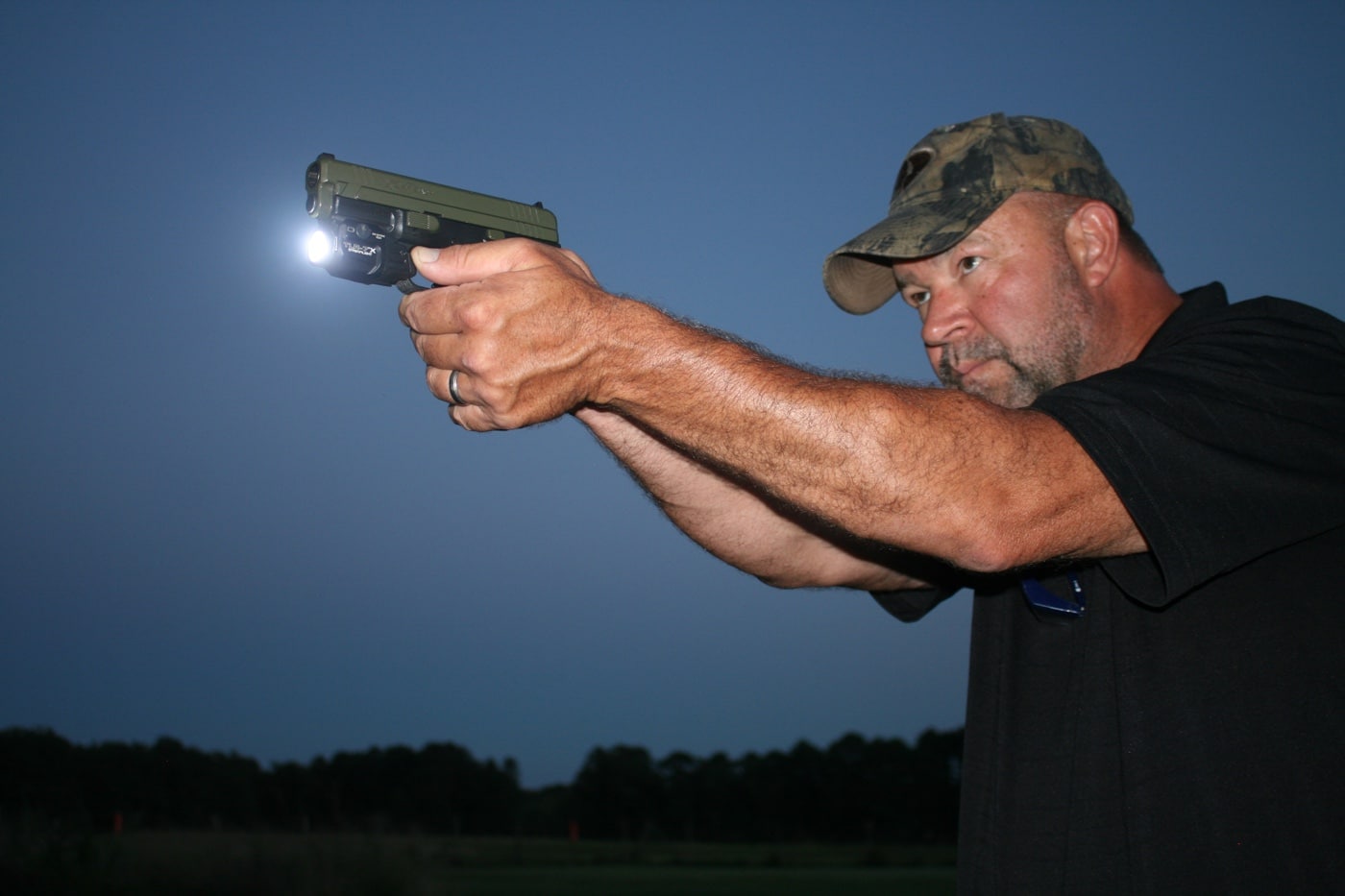
The results of that study led to attention paid to the 10mm round, but ultimately the birth of the .40-caliber cartridge. Without question, the FBI has great influence over other police agencies and, in short order, departments were switching over to the new .40-cal. cartridge. This trend did not go unnoticed in the commercial market, and armed citizens jumped on the bandwagon as well.
[See Dan Abraham’s article on 10mm vs. .40.]
The magazine restrictions of the 1994 “Crime Bill” also came into play to make the .45 ACP a positive alternative to the 9mm. For several years magazines with capacities greater than 10 rounds were not available for sale to the general public, and suddenly big-bore pistols became a more attractive proposition. More than one consumer rationalized, “If I can’t carry a lot of rounds, I’m going with a somewhat-reduced capacity of more effective rounds to level the playing field.” No doubt, this boosted the popularity of pistols chambered for .45 ACP.
The Pendulum Swings
In the not-so-distant past, I wouldn’t have bet my life on a small pistol to utilize in a personal defense role. The classic pocket pistols were indeed handy, but reliability was suspect, especially when fed hollowpoint ammunition. A positive trend in more recent times has been the introduction and evolution of really small yet reliable micro-pistols, many of which are chambered for the 9mm. The Hellcat is a perfect example. This new breed of pistol quickly captured the hearts and minds of eager consumers, further broadening the appeal of this timeless cartridge.
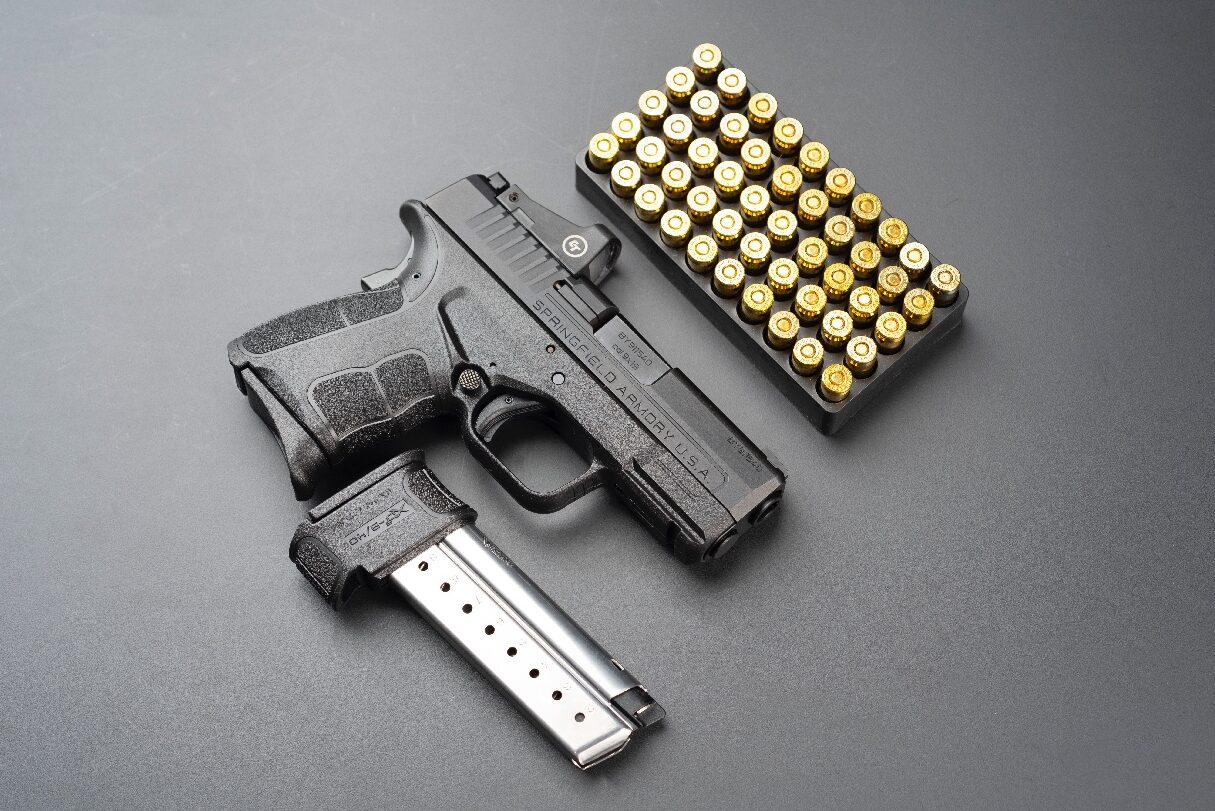
There has also been a shift in law enforcement agencies away from the bigger bores and back to pistols chambered for the 9mm. Several years ago, I looked at a list of the pistols utilized by the Highway Patrol/State Police across the country and, at that time, my home state was the only one where the troopers were still fielding a 9mm. Just a few weeks ago, I had a peek at a similar list and the trend has reversed itself with just a few outfits fielding something other than the Parabellum cartridge.
So, what happened? Our friends in the FBI acknowledged that while the bigger bores still held an advantage when it came to terminal ballistics, this was often mitigated by shooter performance. In short, more powerful cartridges generate slightly greater recoil and muzzle flip than the mild-mannered 9mm. It may come as a surprise to some, but a great many law enforcement officers while competent, can hardly be categorized as firearms enthusiasts.
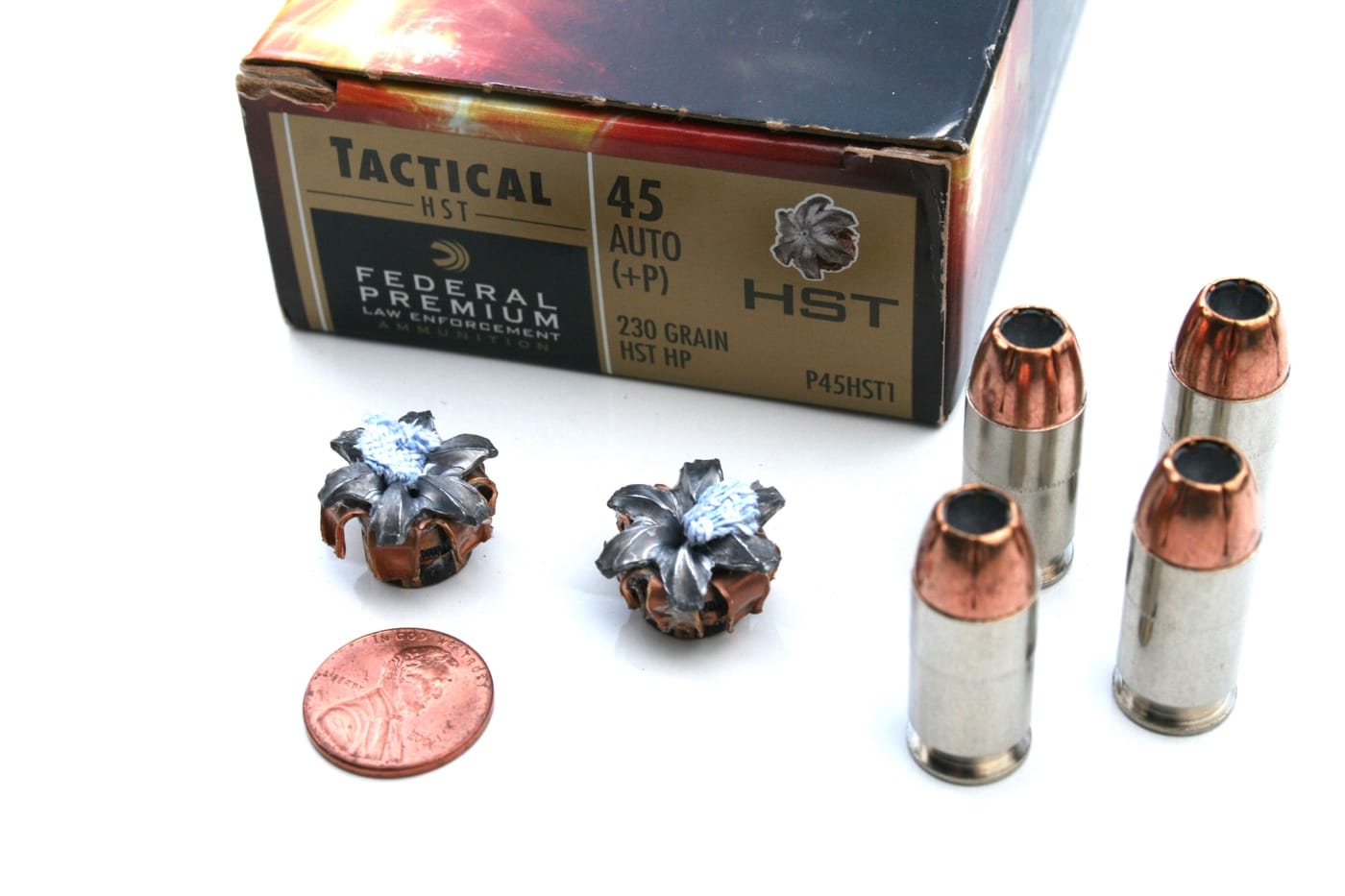
The FBI felt that by going with a cartridge that is more easily managed, a boost in real world performance by shooters of average ability would outweigh any advantage offered by a more powerful cartridge. With state-of-the-art ammunition, terminal performance between the 9mm and the big bore isn’t as great as it once was. Again, FBI doctrine and policies have a great impact on other police agencies, with a trickledown effect on the commercial market.
A while back, I wanted to see what sort of performance disparity there was when shooting 9mm, .40 and .45 ACP pistols in typical combat shooting scenarios. Three identical service size pistols were utilized and the only difference was the slightly larger frame size of the .45 ACP test gun. Four different scenarios inside of 7 yards were devised, and all firing was done at game speed.
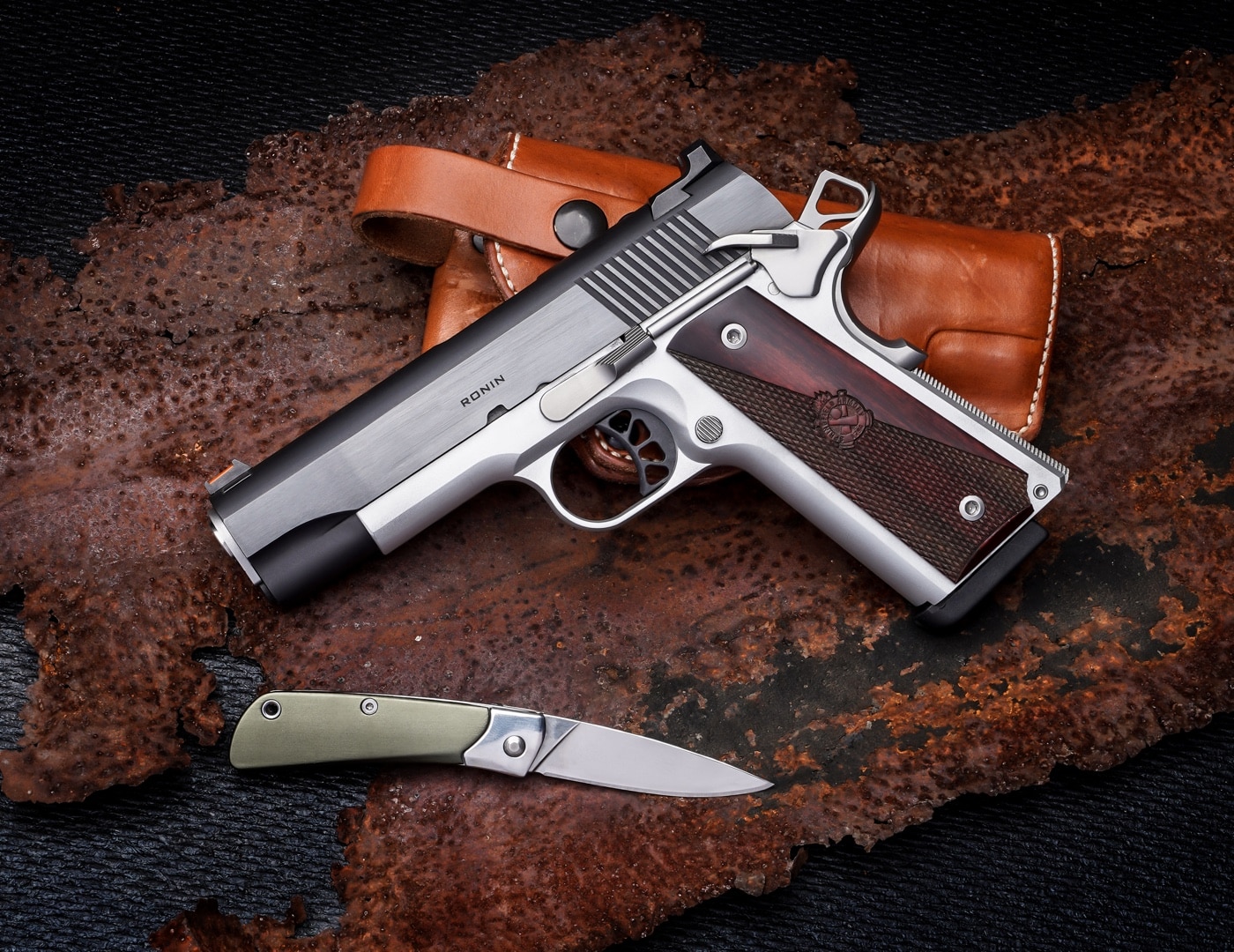
In the end, hit potential was the same between the three different pistols, but I was able to run the 9mm pistol measurably faster. Felt recoil in the .40 variant was a bit snappier — more so than the .45 ACP — but I didn’t consider any of the test trio to be difficult to control when firing in a rapid cadence. I’ll be the first to admit that the way we perceive recoil is subjective, and others may not have enjoyed the same result.
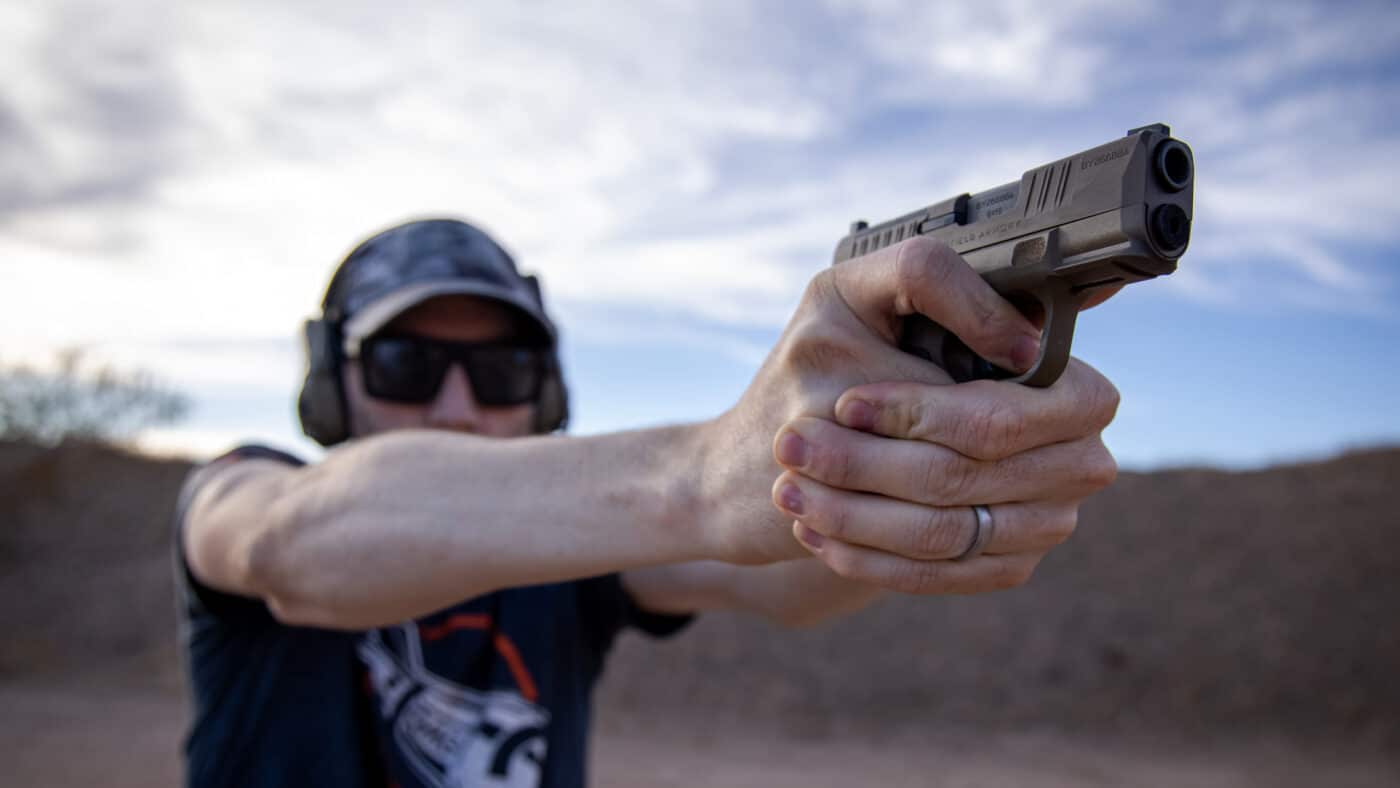
Can I Really Manage a .45?
Pistols chambered for the .45 ACP can be managed by most anyone who commits to a regular practice regimen. Despite rumblings to contrary, this specifically includes smaller-stature people. I am familiar with a few female shooters who had a problem getting a proper grip with a double-column 9mm pistol, yet took to a .45 ACP 1911 like a duck to water.
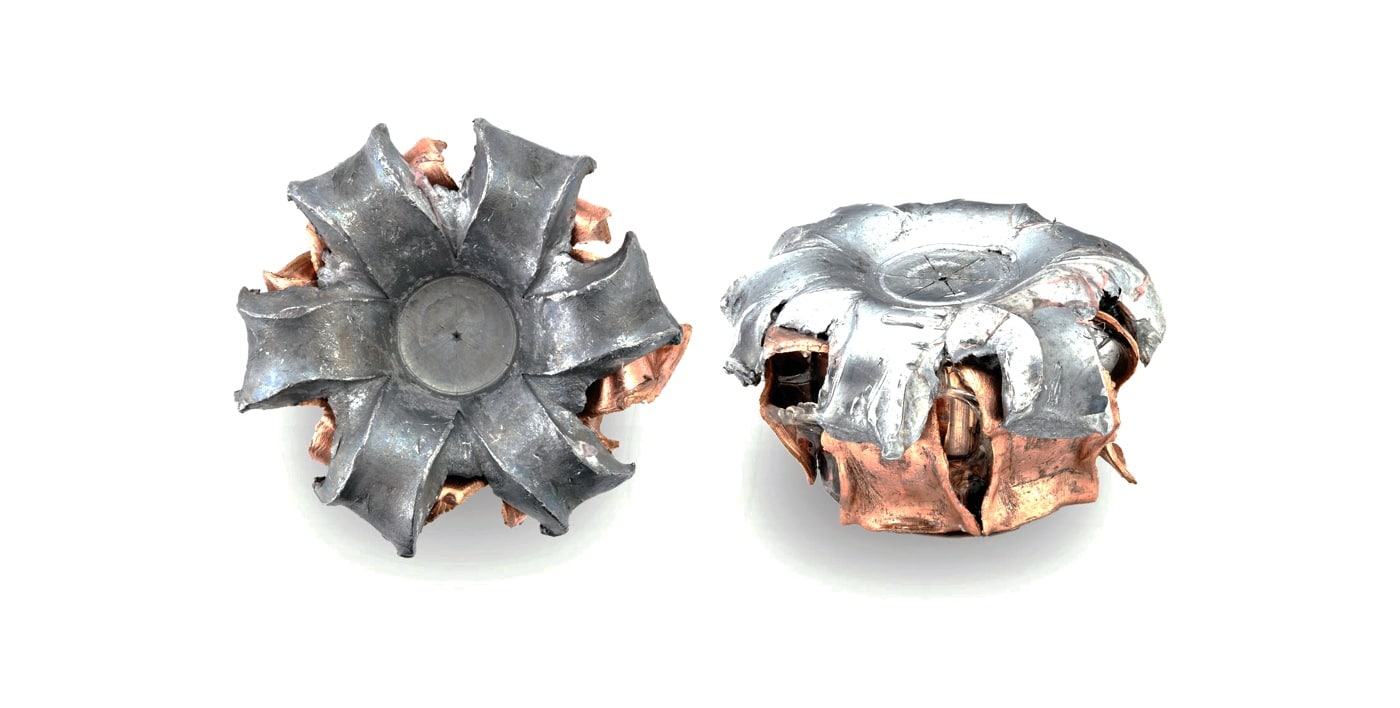
Make no mistake about it, a .45 ACP will always generate more recoil and muzzle flip than a 9mm in a like-size pistol. But is it manageable? You bet! When firing a steel-frame pistol such as a 1911, the shooting experience isn’t at all abusive; my old .357 Magnum service revolver was considerably ruder. I’ve run a steel-frame 1911 in classes, firing several hundred rounds a day with no ill effect. However, when firing lighter and/or smaller guns, the game can change 180 degrees.
My modest collection contains an alloy-frame 1911, which is a joy to carry, but I put about a 100-round limit on it for practice. If I go beyond that my hand starts to send me signals, and once the comfort factor is compromised we tend to get a little sloppy. Surprisingly, polymer-frame pistols chambered for .45 ACP are actually quite pleasant to shoot despite their light weight. The polymer somehow dissipates felt recoil, and that’s okay with me.
Some years ago, I had the opportunity to test fire the Springfield Armory XD-S pistol at the SHOT Show and came away pleasantly surprised. This small, single stack is roughly the same size as a snub revolver, but I found it far easier to shoot and control in rapid fire.
A simple test I use to determine if one’s performance with a handgun would make the grade is the Tri-Five drill. Put a realistic size, humanoid target up and move yourself five yards away. Load and charge with a five-round magazine and place it in the holster. On the signal, draw and fire one round with both hands on the gun, two shots strong-hand-only, and two shots weak-hand-only. Can you get it done in five seconds or less with all hits in the high-value area? If so, you might be on to something.
Myth vs. Reality
In an earlier era of time, a widely held perception was that the .45 ACP was a stellar performer in personal defense scenarios while the 9mm was ineffective. One observer of the scene pontificated that a center hit from a .45 would stop a determined aggressor 19 out of 20 times with a single shot! I would submit that there was indeed pretty big disparity when ball ammunition, was used but well-designed hollowpoints have changed the situation notably.
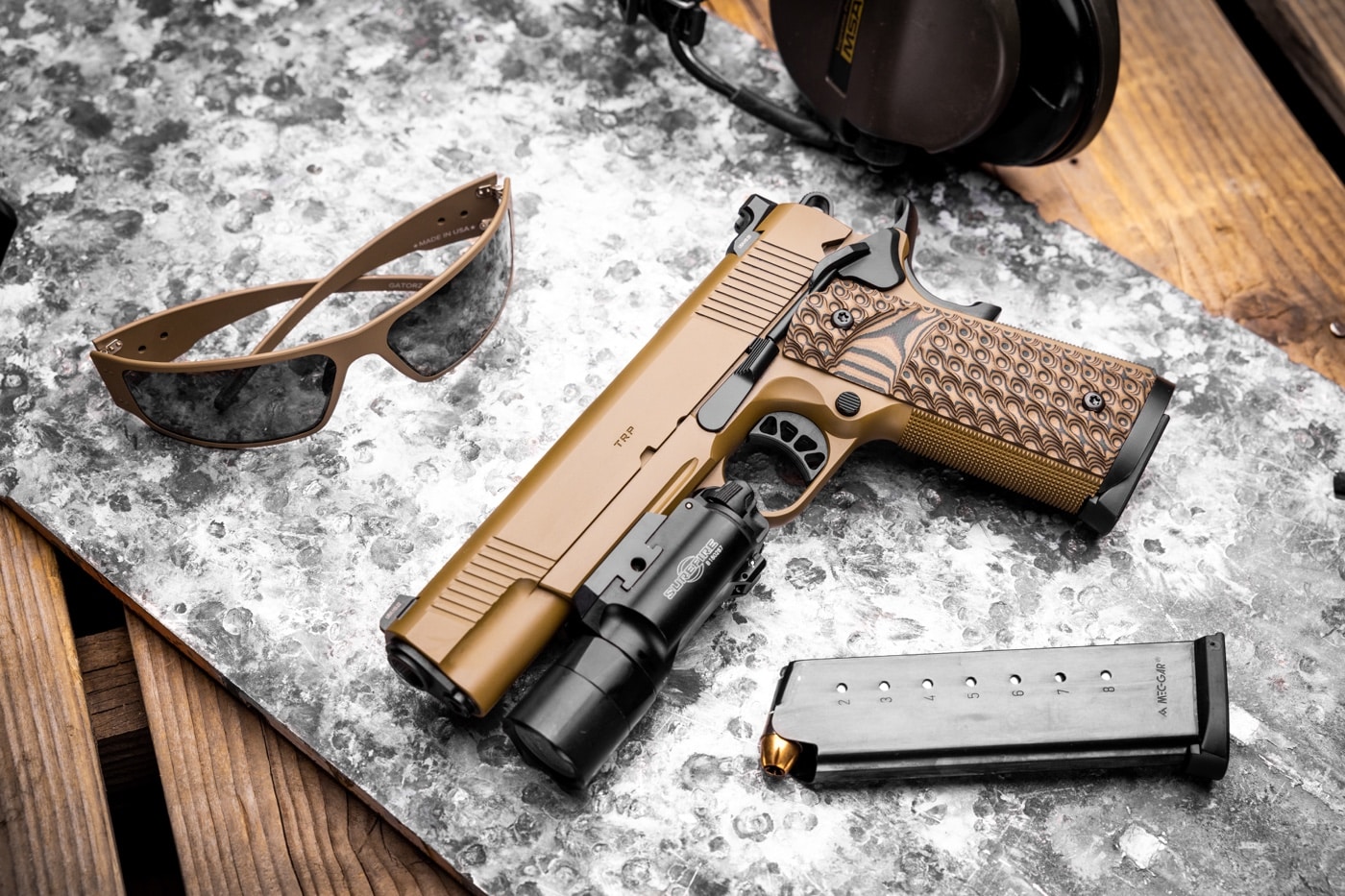
At one time or another, I have fired examples of just about all the popular JHP loads from the manufacturers into 10% ballistic gelatin. I will be the first to stipulate that firing rounds into a homogenous substance may not always give an accurate barometer of real-world performance, but it does give us perspective.
I have long made a point of putting four layers of denim in front of the gelatin blocks to simulate heavy clothing. Heavy clothing has a nasty habit of fouling the cavity and retarding or totally preventing expansion. Today, most state-of-the-art hollowpoint ammo will still perform after going through the clothing barrier and expand to roughly 1.5 times their original diameter. But if expansion is compromised in any way, a larger diameter bullet will have an edge. This may be a valid consideration for those who live in cooler climates.
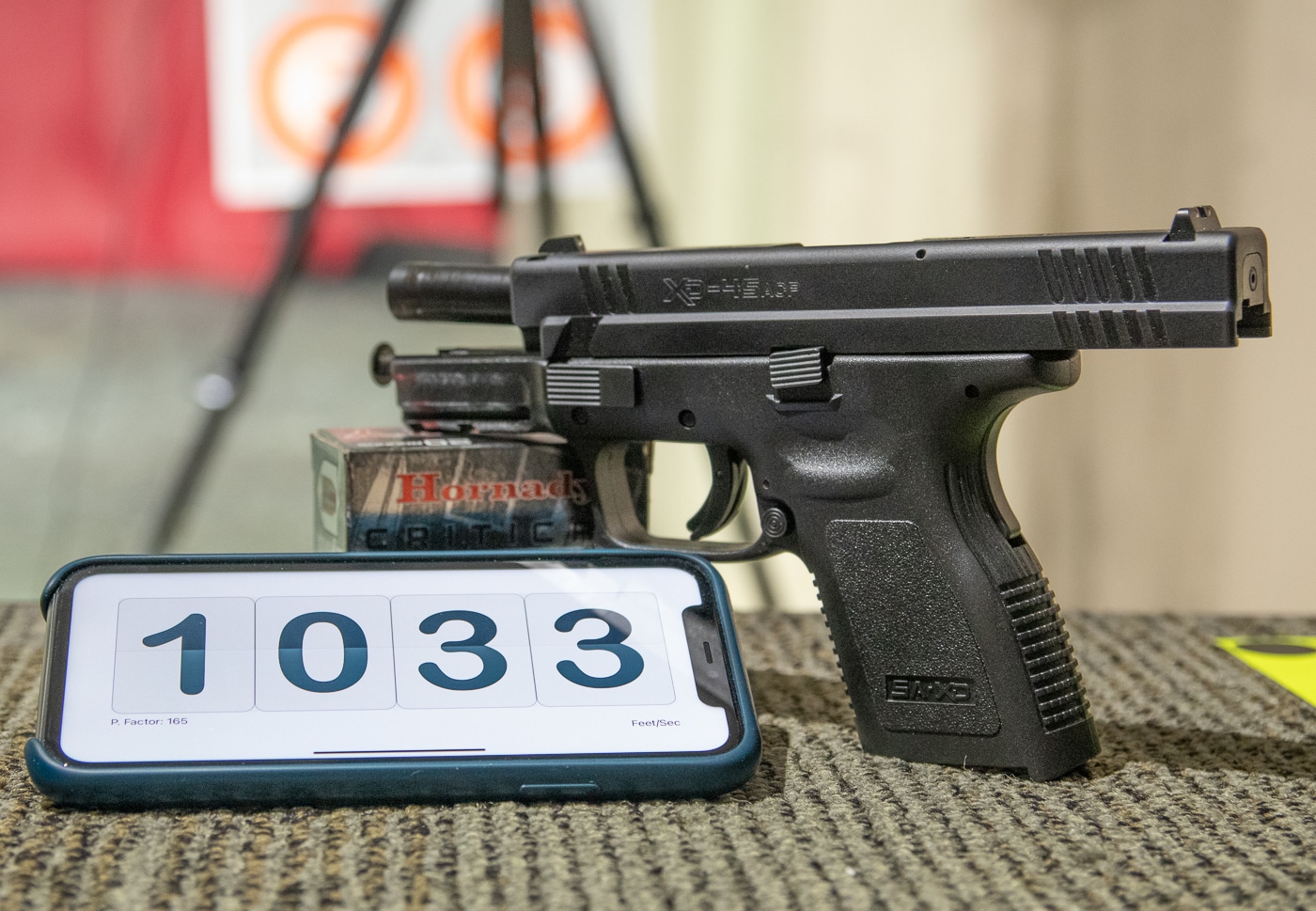
Assuming equal penetration and optimum expansion, the larger projectile will cause greater damage to a target. However, as much as I like the .45 ACP I don’t attach any magical qualities to it. It may offer an advantage to the 9mm and other smaller calibers, but that 95% stop rate defies logic.
Conclusion
As a retired law enforcement officer, I can legally carry a firearm in all 50 states. However, I am not exempt from magazine capacity restrictions. If I’m restricted to carry a 10-round magazine, my Springfield Armory XD Compact in .45 ACP will get the call. This particular XD was treated to a number of enhancements by David Bowie of Bowie Tactical Concepts and hits all the required high notes.
I have it paired off with an OWB Kydex holster from Muddy River Tactical, and it wears a Streamlight TLR-7X illuminator. Unlike my alloy-frame 1911, the XD Compact doesn’t bite the hand that feeds it and is well-suited for extended practice sessions.
If you subscribe to the concept of bigger is better, a carry pistol in .45 ACP may be just the ticket. Choices are indeed more limited, and ammo will cost a few bucks more and ultimately you’ll have to decide if it’s worth the effort. It does indeed push a bit more than a like-size 9mm, but that should not be an issue for a dedicated shooter.
Editor’s Note: Please be sure to check out The Armory Life Forum, where you can comment about our daily articles, as well as just talk guns and gear. Click the “Go To Forum Thread” link below to jump in and discuss this article and much more!
Join the Discussion
Featured in this article
Read the full article here


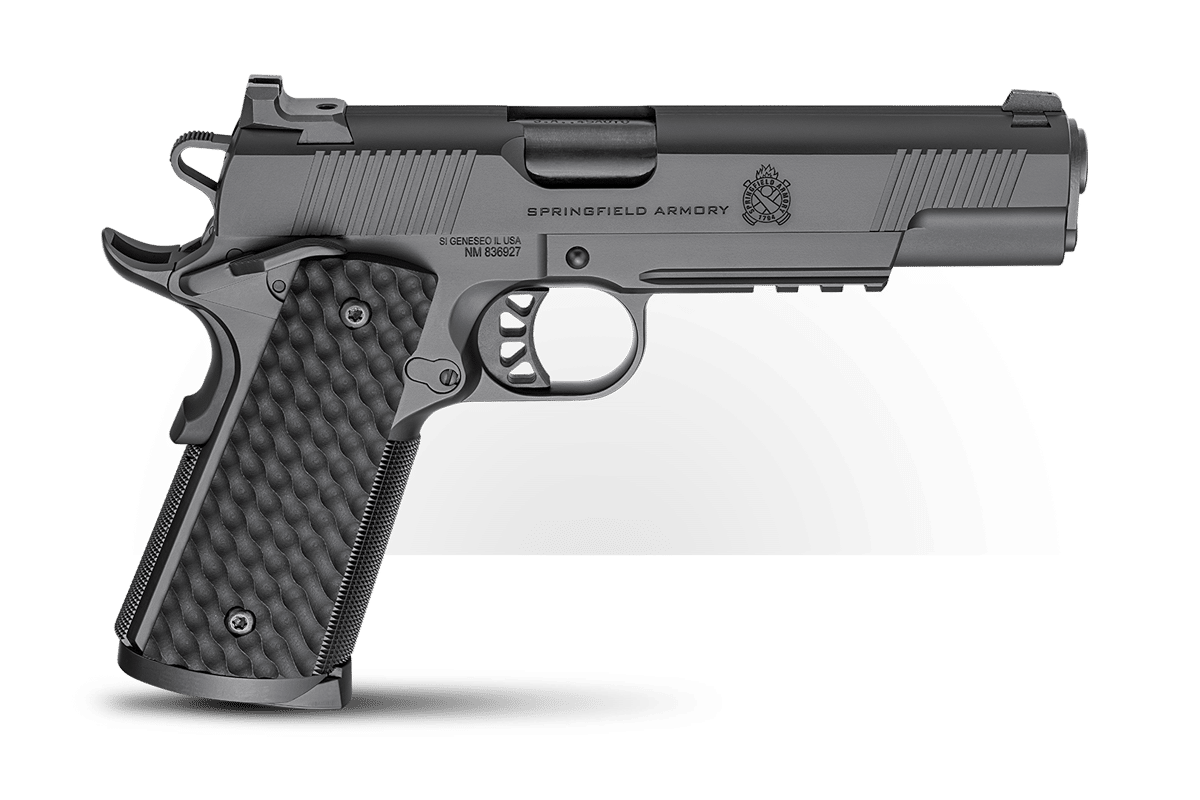
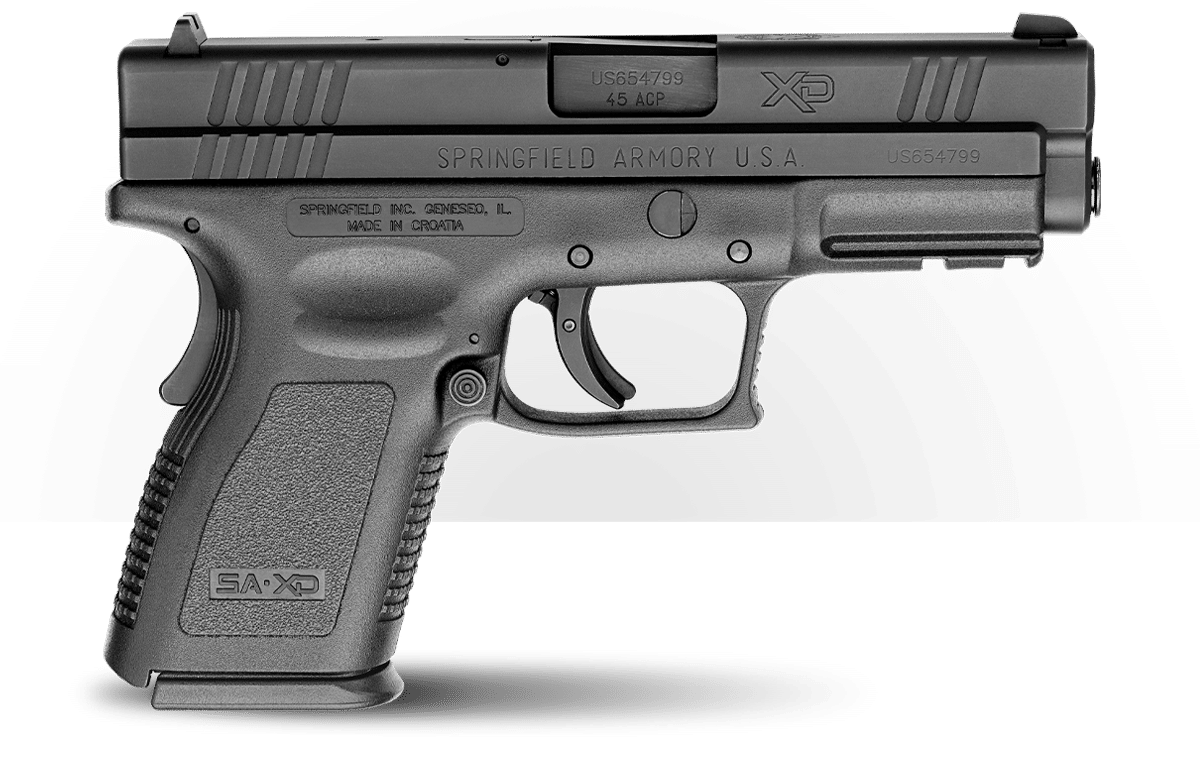




![Best Micro Compact 9mm Pistols [Field Tested] Best Micro Compact 9mm Pistols [Field Tested]](https://i2.wp.com/gundigest.com/wp-content/uploads/EDC-X9-2-review-target.jpg?w=390&resize=390,220&ssl=1)
